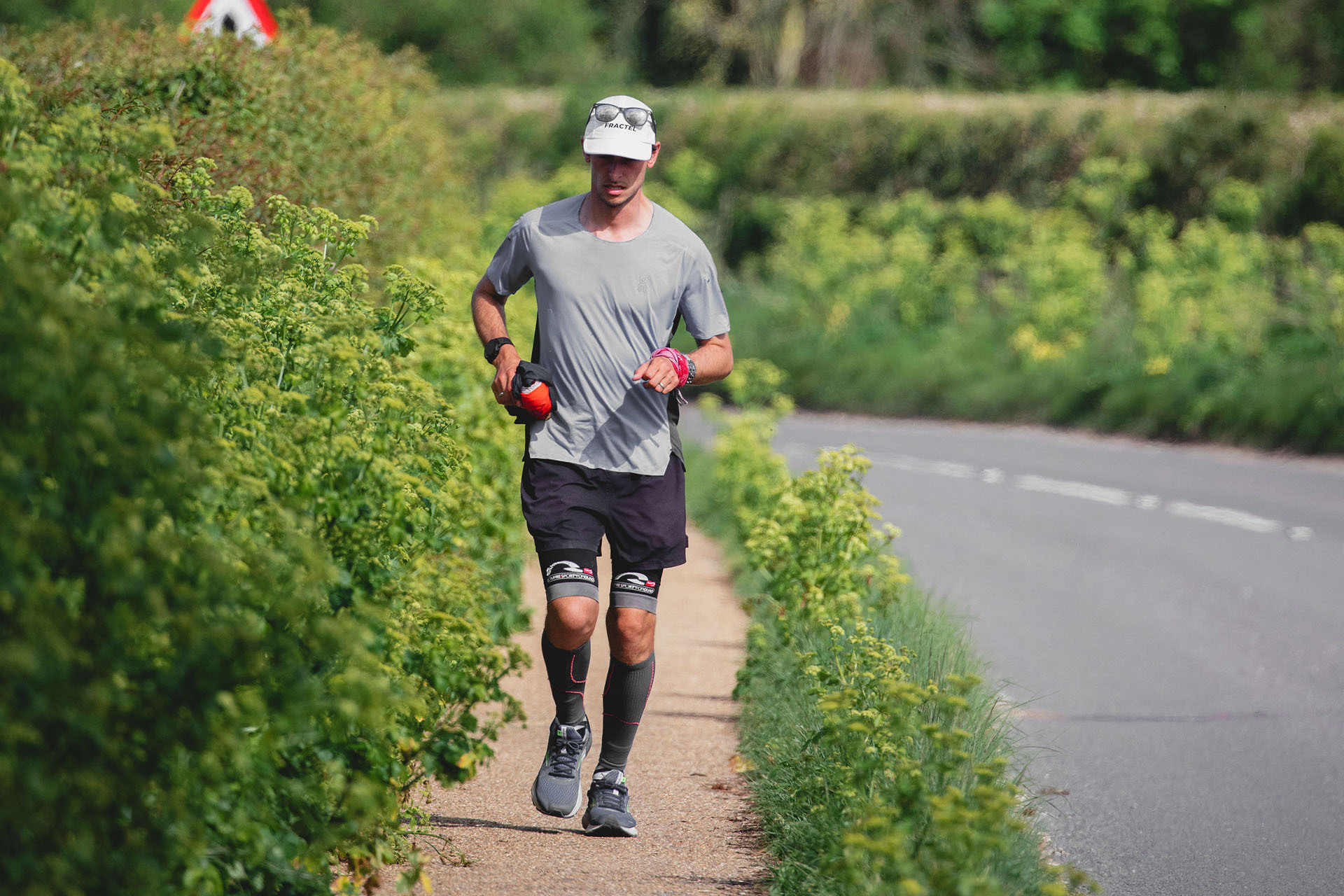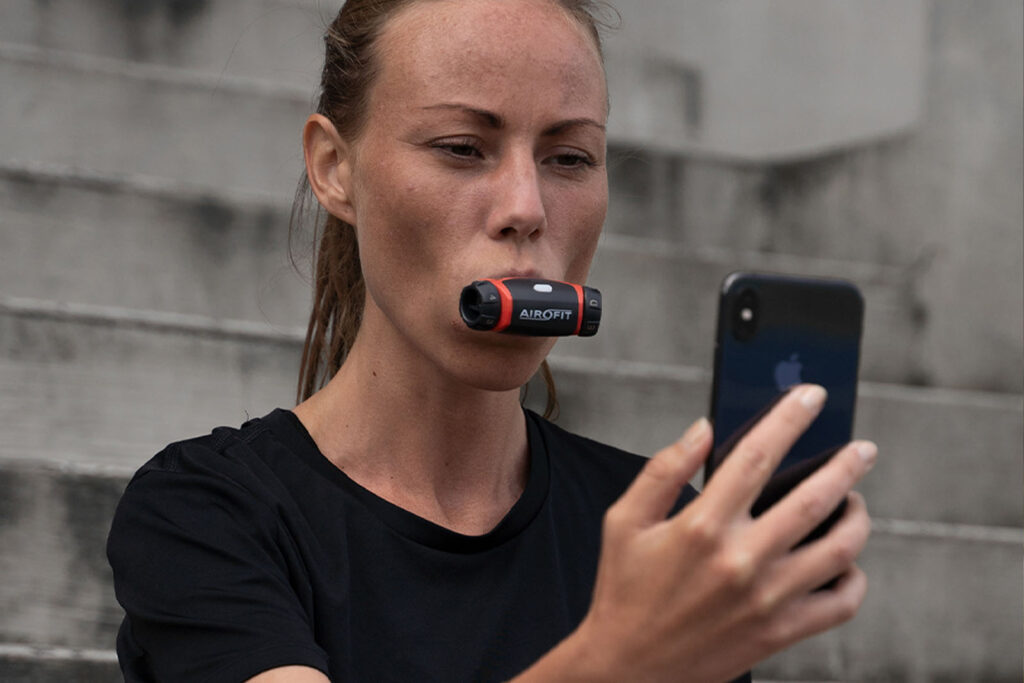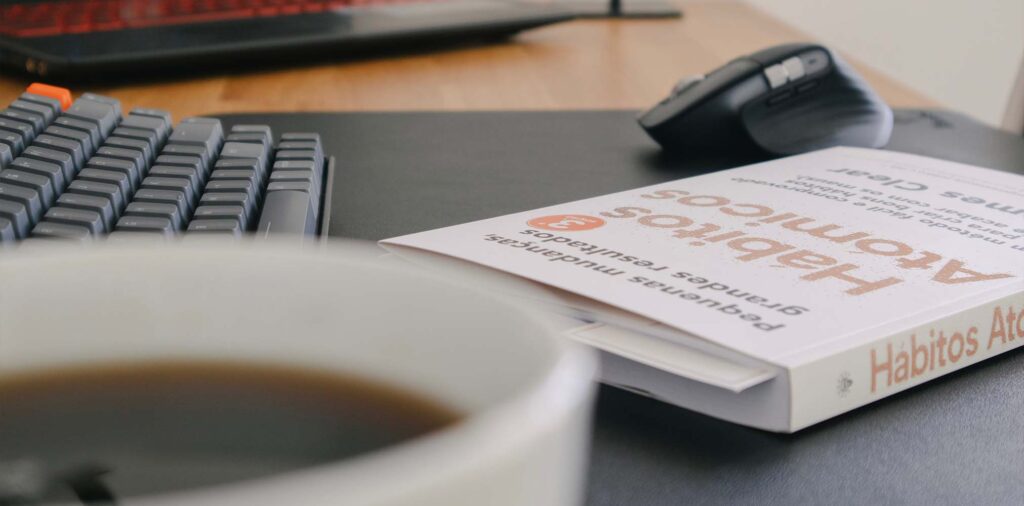Boost endurance and athletic performance – better breathing 101

Learning the basics of good breathing practices and techniques might seem odd to some. “Duh, I think I know how to breathe,” is a common reaction, or else a suspicion that breathwork is strictly for the yoga and incense crowd.
But times are changing and increasingly we see professional sports coaches, personal trainers and pro athletes adding basic breathwork techniques and respiratory muscle training (RMT) to their training toolkit. And it makes perfect sense, as a pro athlete hunting for marginal gains, will see the value of boosting their lung performance to shave seconds off their times and recover faster.
“The bedrock of endurance sports is efficient recovery, and Airofit is my key to unlocking another level of muscle revival. Breathing fuels my body with the energy it requires to repair itself, and through training my respiratory muscles my strength is restored more expertly and expansively than ever before.”
Nick Butter, ultra-marathon runner, multiple World Record holder
And for the rest of us, those who simply love running, cycling and other endurance events, the promise of better breathing and faster recovery via breath training seems too good to pass up.
Breathing basics
It doesn’t hurt for us to ‘go back to school’ and refresh our memories on the basics of breathing. It’s so fundamental to everything we do, and bad breathing habits can have a huge negative impact on our lives.
The lungs expand to draw in air as the main breathing muscle – the diaphragm – contracts. On exhale, the diaphragm relaxes and the lungs contract. This automatic process is assisted by the intercostal muscles, abdominals and others. So breathing is very much a muscle-based activity, and like any other muscles, those involved in breathing can be trained. This is where respiratory muscle training comes into its own.
Slower, more efficient breathing means a reduced heart rate, and a stronger diaphragm will work more efficiently to power you through the toughest challenges. With training you can also increase your available lung capacity, and reduce fatigue, major benefits in endurance sports.
So it makes sense for athletes to learn the mechanics of breathing and find the best ways to optimize their lungs for better athletic performance, as well as improved health and overall well-being.
Train from your sofa!
Any serious endurance athlete knows that you have to put in the miles if you want to compete and perform at your best. But the novel idea of improving your fitness while sitting down seems too good to be true.
The breathing muscles are working constantly, without conscious control, even while we sleep. But we often pick up bad breathing habits and can be unaware of how much they can negatively impact our performance.
And since our breathing patterns are closely linked to our physical and mental health, good breathing habits means you are able to approach any event fitter, more rested, and able to perform at your very best. So, what can we do to improve our breathing?
Diaphragmatic breathing
Learning to breathe deeply from the diaphragm is one of the greatest health hacks you can possibly learn. It’s an ancient technique, yet surprisingly neglected in much sports coaching. Sometimes referred to as belly breathing, learning this simple stress-busting technique really can transform your health and improve your athletic performance. It can also lead to faster post-event recovery and help you get more sleep. In a previous post we looked at the various breathing techniques and their benefits.
The role of the metaboreflex
During any hard physical activity, your breathing muscles will become fatigued. As you make greater demands on them, their need for blood increases, just like any other muscle.
The Metaboreflex – aka Metabolic Reflex – will always ensure there is sufficient blood supply to your vital breathing muscles by prioritizing them over other less-crucial ones. This means a reduced blood supply to your locomotor muscles—those that power movement—and a reduction in their performance.
By training the breathing muscles with RMT, you can improve their efficiency and reduce the impact of the metaboreflex. This means more oxygenated blood available for the other muscles and better stamina in endurance events.
Respiratory muscle training – resistance is not futile!
The recommended daily practice for RMT is just 10 minutes. You can expect to see measurable gains in just 4 weeks, and will certainly notice the improvements if you train regularly and follow the coaching programs, like those in the Airofit app.
The Airofit trainer provides variable resistance training for your breathing muscles, so you can increase the load, just as you would with weight training. And you can test your lung volume weekly to track the improvements. One study showed respiratory muscle training improved endurance (during cycling) by a remarkable 33%1
Clearly, the inclusion of breathwork techniques and RMT in any training plan will pay dividends in terms of sports endurance, recovery and overall health. And as a training tool, it’s a simple and effective route to significant gains.
Training for endurance events means time, commitment and hard work. But training your respiratory system for peak performance is now an easily-attainable goal with a minimal time investment.
1 Caine MP, McConnell AK. Pressure threshold inspiratory muscle training improves submaximal cycling performance. In: Sargeant AJ, Siddons H, editors. Third Annual Conference of the European College of Sport Science; 1998; Manchester, UK: The Centre for Health Care Development; 1998. p. 101.




